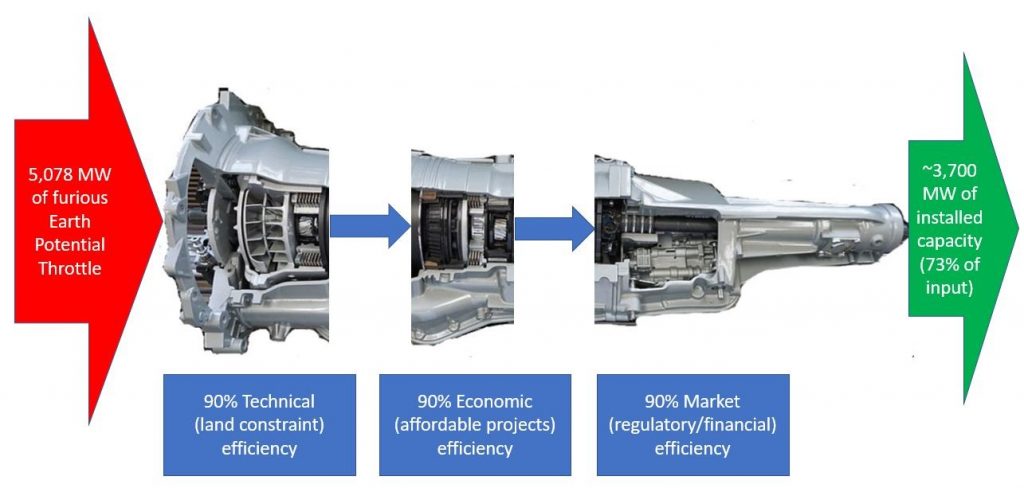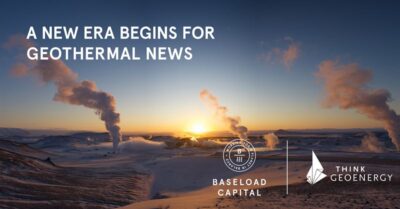Key observations on the wider applicability of the U.S. GeoVision geothermal report
William Harvey, a Project Engineer at U.S.-based POWER Engineers, shares insight and highlights interesting points of the GeoVision Geothermal Report released by U.S. Department of Energy (DOE) earlier in 2019.
In an article published last week, William Harvey, a Project Engineer at U.S.-based POWER Engineers, shared some points on the U.S. Department of Energy (DOE) Geothermal Technologies Office’s (GTO) GeoVision Report (“GVR”), released earlier in 2019.
While seemingly focused on the U.S. the document, so William Harvey, has “wider geographic applicability”. ”
We agree with him that “naturally it would be best to read the whole (report)”, so his points provide a good teaser. In his piece he focuses on three key elements: geothermal language, value propositions, triangles and transmissions.
Geothermal Language
Looking at geothermal language, he tackles the notion of geothermal energy being a “secure, reliable, flexible and domestic resource”. While we all agree with that, there are some interesting things to keep in mind that he mentions, such as comparison of capital cost, and the overall context of the economics of renewables versus geothermal technologies with high annual fuel costs.
He describes it based on the capacity factor, essentially the time plants produce power. So while the capital cost for wind power installations might be significantly lower, around $1,700-2,200 per installed kW, while geothermal has a cost of around $3,000-6,000 per kW installed, this might not give the real picture.
“Geothermal plants can have cfs around 90-95%, so a “cf-weighted” capital cost might be more like 3,200-6,300 $/kW. If wind cfs are around 35%, their cf-weighted costs may lie around 4,900-6,000 $/kW. Solar cfs at 25% would translate to 6,800-8,400 $/kW. … So in our conversations about geothermal, let’s use $/kW figures with caution and heavy qualifiers.”
Value Propositions
Understanding the complete offering of geothermal energy as supply not only of electricity, but also heating, cooling etc has been slow to arrive in the U.S., as he says it. So it is definitely great that the GeoVision report shares the benefits offered by geothermal energy. He describes the following broad categories of value streams provided by geothermal plants:
- Power (electrical and thermal)
- Materials: Solids (e.g. mineral extraction), Liquids (e.g. balneology, fish farming) and Gases (industrial gases, synfuels)
- Social/broader benefits (e.g. employment, operating reserve, colocation with other generation or industrial assets)
So here again the cost per installed generation capacity ($/ kW) or competitive levelized cost of electricity generation (LCOE), does not take into account the additional value streams provided by a more complete utilisation of the geothermal resource tapped into by a plant.
Triangles and Transmissions
He shares an interesting point made in the GeoVision report, that essentially highlights the fact that “of the maximum potential of a region, only some of it gets harnessed, due to various technical, economic, and market constraints.”
His view on that triangle is that of an engineer, while recognizing the value thereof in visualizing “what is limiting develoment”.

In this context I remembered an approach to showcase the Terrestrial energy current through the crust of Iceland and stored heat by Iceland’s National Energy Authority. While not going as far in the sense of showcasing the usability of geothermal resources, it could be a better approach for us to show unused “energy potential” in tapped geothermal resources of geothermal power plants.

He then describes how we could look at the triangle differently, which would help us “see ways each of us can contribute to improving any country’s conversion rate from resource potential to installed capacity.”
Check out his article via the link below.
To find and read the full GeoVision report, click here: https://www.energy.gov/eere/geothermal/geovision
Source: William Harvey, “Exporting Observations from the U.S. 2019 GeoVision Report” published on LinkedIn


















